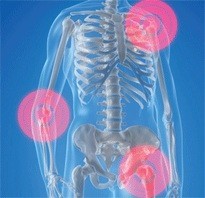Period: September to December 2012
Over the past decade, the availability of targeted biological therapies has revolutionized the treatment of rheumatoid arthritis, psoriatic arthritis and ankylosing spondylitis. However, the significant cost of these biologicals is often prohibitive and limits universal access to these effective therapeutic agents. Whereas generic drug equivalents are commercially available for many small-molecule medications, such lower cost alternatives to targeted biological therapies are not yet available in the US or the EU. The first biological therapeutics in rheumatology is now approaching patent expiration and biosimilars are now in randomized controlled trials. This means that cheaper biosimilars for the treatment of rheumatic diseases are likely to enter the market in the near future, increasing patient access to these life-changing treatments.
This article discusses some of the research papers on biosimilars in rheumatology that have been published during the period of September to December 2012, highlighting the importance of biosimilars in this field.
The role of biosimilars in rheumatology
Authors Dörner et al. discuss the problems with developing and manufacturing biosimilars of such complex molecules, given that post-translational modifications, such as glycosylation, may occur from changes in cell lines and/or manufacturing processes, resulting in products that are highly similar, but not identical, to approved ‘reference’ biologicals [1].
Even minor modifications in manufacturing processes, which often occur with reference biologicals, due to improvements in efficiency, scale up to meet commercial demands or changes in manufacturing sites, may alter biological function and/or immunogenicity, potentially changing the safety and efficacy profile of the biological.
The authors present the conclusions of a panel of international experts in the field of rheumatology, who recently convened to evaluate and discuss these issues. They concluded that a clear understanding of the inherent differences between reference antibodies and biosimilars, their clinical implications and the processes governing regulation, approval and clinical use of biosimilars, is paramount.
Cost pressures
According to authors Lapadula and Ferraccioli increasing pressure for lower cost versions of biological medicines will inevitably lead to the use of biosimilar drugs in rheumatology. The hope is that biosimilars will provide cost savings, which may broaden access to biopharmaceuticals and stimulate further research [2].
With pharmacological and pharmacoeconomic issues in mind, the authors discuss the need for patients to have a biosimilar product, with comparable efficacy and safety to originator biologicals. Possible issues that will govern the assessment of the bioequivalence and interchangeability of biosimilars are also discussed.
The research highlights the importance of understanding the differences between biosimilars and their reference products, issues that may arise when assessing bioequivalence and interchangeability of biosimilars and the need for biosimilars, given the increasing pressure for lower cost versions of biological medicines.
GaBI Journal is currently planning to publish a Special Issue (educational editorial series) on 'Biosimilarity and Interchangeability' with Professor Shein-Chung Chow, a member of the International Editorial Advisory Board, as the Guest Editor. Contact us for more information.
Related articles
Overview of research on analytical techniques in the manufacturing of biosimilars in 2012
Overview of research on regulatory issues surrounding biosimilars in 2012
Overview of research on ‘specific’ policies aimed at generics in 2012
References
1. Dörner T, et al. The role of biosimilars in the treatment of rheumatic diseases. Ann Rheum Dis. 2013 Mar;72(3):322-8.
2. Lapadula G, Ferraccioli GF. Biosimilars in rheumatology: pharmacological and pharmacoeconomic issues. Clin Exp Rheumatol. 2012 Jul-Aug;30(4 Suppl 73):S102-6.
Permission granted to reproduce for personal and educational use only. All other reproduction, copy or reprinting of all or part of any ‘Content’ found on this website is strictly prohibited without the prior consent of the publisher. Contact the publisher to obtain permission before redistributing.
Photo credit: rheumatology.org








 0
0











Post your comment